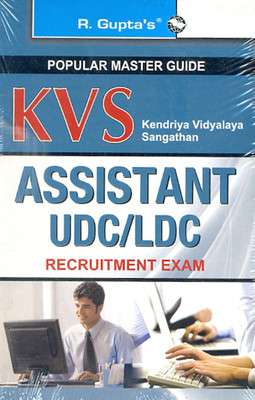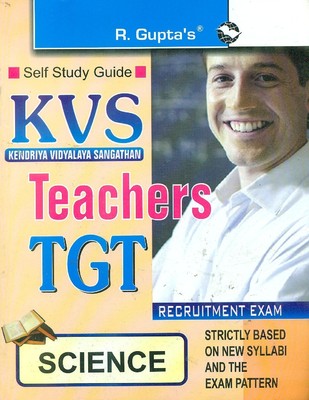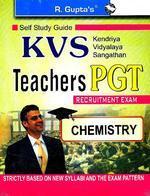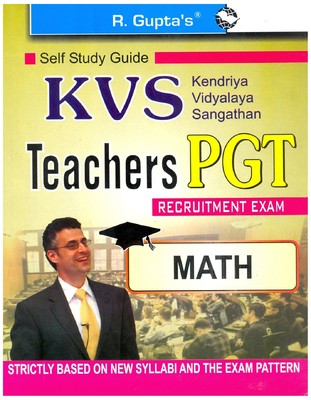|
#2
26th November 2014, 12:11 PM
| |||
| |||
| Re: KVS entrance exam for TGT Science and PGT English
Ok, you are preparing for KVS entrance exam for TGT Science and PGT English so do preparation according to exam pattern and syllabus. Here I am providing you the syllabus of TGT Science and PGT English. KVS TGT Science syllabus EFFECT OF CURRENT Potential; potential difference ohms law; series combination of resistors, parallel combination of resistors; Power dissipation due to current; Inter relation between P,V,I and R. Magnetic field & magnetic lines, Magnetic field due to current carrying conductor; Fleming left hand rule, Electromagnetic Induction; Induced Potential Difference, Induced current; Direct current, Alternating current; Frequency of AC, Advantage of Electronic Motor & Electronic Generator. LIGHT Convergence and Divergence of light; Images formed by a Concave Mirror; related concepts, centre of curvature; principles axis, optic centre, focus, focal length, Refraction & laws of refraction. Images formed by a convex lens; functioning of vision and remedies. Applications of spherical mirrors and lenses. Appreciation of concept of refraction index; Twinkling of stars; Dispersion of light; Scattering of light. SOURCES OF ENERGY. Different forms of Energy, Leading to different sources for human use: Fossil Fuels, solar energy; Biogas; Wind; Water and Tidal Energy; Nuclear Energy. Renewable versus non-renewable sources. MOTION ; FORCE AND NEWTON’S LAWS. Displacement, Velocity, uniform & Non-Uniform motion along a straight line, acceleration distance-time and velocity, Time graphs for uniform and uniformly accelerated motion; Equations of motion by graphical method Equations of motion by graphical method; Elementary idea of uniform circular motion. Force and Motion; Newton’s laws of motion Inertia of a body; Inertia and Mass, Momentum Force and acceleration, Elementary idea of conservation of momentum, Action and Reaction forces. GRAVITATION; WORK , ENERGY AND POWER Gravitation; Universal Law Of Gravitation, Force of gravitation of the earth(gravity, acceleration due to gravity; mass and weight; free fall. Work done by a force energy, power ; Kinetic and Potential energy; law of conservation of energy. FLOATATION Thrust and Pressure, Archimedes Principle ,Buoyancy, Elementary idea of relative density. SOUND Nature of Sound and its Propagation in various media, Speed of Sound, Range of hearing in Humans; Ultra Sound, Reflection of sound; Echo and SONAR; Structure of the Human Ear(Auditory aspect only) MATTER-NATURE AND BEHAVIOUR: STATES OF MATTER Gases, liquids, solids, plasma and Bose- Enstein condenstate, types of intermolecular forces. Classification of matter into mixtures and pure substances. Henry’s Law. Concentration of solutions. Colloids- phases of colloids, Tyndall effect, Brownian movement. suspension. Properties of matter. Measurement of properties of matter- S.I. system of units, physical and chemical changes. Laws of chemical combination Gay Lussac’s law, Avogadro law, atomic and molecular masses, average atomic mass, mole concept and molar masses, percentage composition. STRUCTURE OF ATOM Dalton’s atomic theory, Discharge tube experiments, J J Thomson’s model of atom, Rutherford’s model, Bohr’s model of atom, electronic configuration, formation of ions, Characterisation of elements as metals, metalloids, or non-metals, isotopes (their applications), isobars and isotones. PERIODIC CLASSIFICATION OF ELEMENTS Mendeleev’s periodic law, Periodic properties of elements, – trends in the periods and groups: Importance of the periodic table, position of hydrogen in the periodic table. CHEMICAL SUBSTANCES Nature and behaviour Acid, Bases and Salts: Classical definition of acids and bases, Bronsted- Lowry theory, Lewis concept of acid and bases, relative strengths of acids and bases, logarithmic or p scale- pH, pOH and pkw, ionic equilibria in a solution Action of indicators on acids and bases, sources of acid and bases, Salt-Classification of salts and their pH CHEMICAL REACTIONS Formulation of chemical equations, balancing chemical equations, Types of chemical equations with examples. METALS AND NON- METALS Characters of metals and non-metals including all properties and applications Occurrence of metals in nature : ores and minerals, enrichment of ores – metallurgical operations. Corrosion: rusting of iron – prevention of corrosion CARBON COMPOUNDS Position of carbon in the periodic table. Concept of hybridization and shapes of molecules structural formula and molecular models, types of reactions undergone by organic compounds, homologous series of compounds having different functional groups, isomerism, IUPAC nomenclature of organic compounds. Hydrocarbons – their classification formation of coal and petroleum. Industrial source, preparation and properties of alkanes Alcohols: Preparation and properties. Qualitative analysis of alcohols, iodoform test, effect of alcohols on living beings. Carboxylic acids: Preparation and properties. Functional group analysis of carboxylic acid. Soaps , detergents , biodegradable detergents. Carbon fibres. CONSERVATION OF NATURAL RESOURCES Pollution of river water, Ganga action plan for improving quality of water, (1) Need for sustainable management of natural resources. Development of non- conventional energy resources to prevent pollution and atmospheric conservation. MAN MADE MATERIAL Ceramics, cement, porcelain, glass, carbon fibres, soaps and detergents, polymers, fibres and plastics. Life Processes What are life Processes. Need for Nutrition. Different modes of Nutrition in animals. What is Photosynthesis . Various steps of holozoic nutrition. Aerobic and anaerobic respiration. Transportation in Human beings. Transportation in Plants. Transportation in animals. Excretion in animals including Human beings. Excretion in Plants. Control & Co-Ordination. Animals – nervous system. Basic unit of Nervous System in animals. Reflexaction. Human Brain. Co- Ordination in plants. Geotropism – Positive, Negative Hormones in animals. Endocrine & Exocrine glands. Reproduction Importance of variation. Modes of Reproduction used by single organisms. Sexual Reproduction in plants and animals. Reproduction in Human beings. What happens when egg is not fertiliszed. Modes of avoiding pregnancy(family planning) Heredity and Evolution What is heredity? Medals Law of inheritance. How is sex determined. Evolution & Classification. Acquired and inherited traits. Homologus and Analogous organs. What are fossils? Human Evolution. The Human eye and the colourful world. Structure of eye Defects of eye and their correction Natural resources The fundamental unit of Life What are living organisms made of? Structure organization of cell Tissues Define tissue Types of plants tissue and animals tissues Diversity of living organisms Basis of Classification. Classification & Evolution. Hierarchy of classification – groups. Plantae, Animalia. Nomenclature. Why do we fall ill Health & its failure. Diseases and their causes Types of diseases- Infectious, Noninfectious. Prevention of diseases. Smmunisation Natural Resources 1. Our Environment : Atmosphere, roll of atmosphere in climate control, wind, rain, environmental pollution: Global warming and green house effect , acid rain, particulate pollutants, smog, formation of photochemical smog. Formation of ozone and its break down ozone hole, causes of ozone hole formation, polar vortex, effects of depletion of ozone hole. Water pollution-oxygen demand, chemical oxygen demand, international standard of drinking water, processing of drinking water. Soil pollution: waste recycling, Strategies to control environmental pollution, its collection and proper methods of disposal. Biogeochemical cycles: water cycle, nitrogen cycle, carbon cycle, and oxygen cycle. 2. Breath of life: Air, Air pollution 3. Water a wonderful liquid. 4. Water pollution. 5. Biochemical cycles. Nitrogen cycle. Carbon cycle. Oxygen cycle. 6. The green house effect. 7. What is ozone layer. How does it protect the earth. What are the causes of depletion of ozone layer. How can it affect day to day life of living organisms. Improvement in Food Resources Improvement in crop yield. 2. Animal Husbandry. 3. Need for Intercropping. Cross Breeding. KVS PGT English syllabus Section A READING COMPREHENSION Ability to comprehend, analyze and interpret unseen texts. Three/four unseen reading passages may be set. Section B WRITING ABILITY Ability to express views/opinions in a coherent & logical manner. B1. One out of two tasks such as factual description of any event or incident, a report or a process. B2. Writing one formal letter. Letter types include a) Business or official letters(for making enquiries, registering complaints, asking for and giving information, placing orders and sending replies) b) Letter to the editors(giving facts/figures suggestions / opinions on an issue of public interest) on contemporary / current issues. c) Application for a job with cv. B3. Writing personal opinion /views/stand in an article/debate/speech etc on a given socio – cultural issue –in a style/register suitable to the task set. Issues could relate to (a) environment (b) education (c) gender discrimination (d) economic disparity etc.. Section C GRAMMAR AND USAGE Ability to apply the knowledge of syntax and grammatical items & use them accurately in the context provided . The following grammatical structures will be tested through error correction / editing/ gap filling / sentence completion / multiple choice questions : Determiners Tenses Clauses Modals Voice Section D LITERATURE ü Shakespeare’s works. ü Romantic period (e.g. Shelley, Wordsworth, Keats, Coleridge etc) ü 19th and 20th Century American and English Literature (e.g. Robert Frost, Hemmingway, Whitman, Hawthorne, Emily Dickinson , Bernard Shaw, Arthur Miller etc. ) ü Modern Indian Writing in English (e.g. Anita Desai, Vikram Seth, Nissin Ezekiel, K N Daruwala, Ruskin Bond, R K Narayan, Mulk Raj Anand, Khushwant Singh etc) ü Modern writing in English from other parts of the world e.g. Latin America / Africa / Australia / South Asia. KVS exam books- KVS Teachers (PGT) Computer Science Guide (English) 3rd Edition (Paperback)  KVS Assistant UDC / LDC Recruitment Exam : Popular Master Guide (English) (Paperback)  KVS Teachers (TGT) Science Guide (English) (Paperback)  KVS Teachers PGT Exam Guide (English) 01 Edition (Paperback)  KVS Teachers (PGT) Chemistry Guide (English) (Paperback)  KVS Teachers (PGT) Math Guide (English) (Paperback)  All The Best………. |